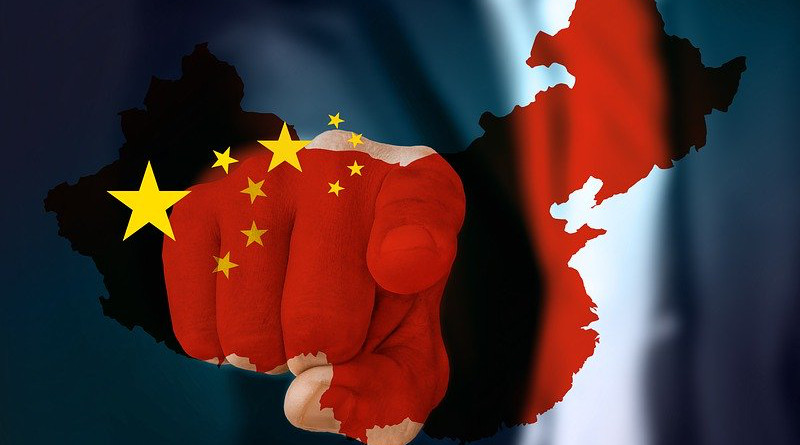


By Marina Yue Zhang
The Yiwu International Trade Market in Zhejiang, China, is a sprawling 4 million square metre housing complex over 75,000 shops. As the 2024 Paris Olympics approach, it has been a hive of international trade, with merchants rushing to fulfil Olympic-related orders.
The market is currently abuzz with French-themed products catering to the Olympic fever. Yiwu’s exports to France soared by 42 per cent in the first two months of 2024 compared to the previous year, reaching nearly 75 million euros. Sports goods exports surged by 70 per cent. This reflects China’s robust manufacturing capabilities and pivotal role in global supply chains.
Most products traded in Yiwu’s market belong to labour-intensive light industries, such as textiles and consumer goods manufacturing. In 2023, these products accounted for over 40 per cent of Yiwu’s export value and 52 per cent of its export growth. Despite global supply chains shifting towards countries like Vietnam, the share of labour-intensive goods in China’s total exports has only slightly decreased, from 18 per cent in late 2017 to17 per cent in 2023.
Yiwu’s robust production performance reflects China’s broader shift from real estate to manufacturing investment. In the first quarter of 2024, China’s industrial production rose by 6.1 per cent and manufacturing investment increased by nearly 10 per cent against a 5.3 per cent GDP growth rate.
While China delivers affordable products globally, overcapacity has increased geopolitical risks and trade tensions, highlighted by Xi Jinping’s recent European trip, aimed at mitigating these tensions. China’s industrial utilisation ratio dipped below 75 per cent in early 2024, the lowest since 2016 — excluding 2020 at the outbreak of COVID-19 — revealing potential resource waste.
Yiwu’s export resilience is fuelled not just by its low-cost products but also by a sophisticated network of information exchanges and collaborative production across enterprise boundaries. Its rapid production and delivery capabilities allow it to handle small orders efficiently. This flexibility starkly contrasts with large manufacturers, which rely on highly organised, large-scale production. As the nexus for foreign buyers and a wide range of suppliers, mainly small- and medium-sized enterprises, Yiwu demonstrates unique organisational skills that enable quick and cost-effective production tailored to specific orders.
Yiwu’s production and delivery capabilities are anchored in its extensive industrial clusters, which foster both cooperation and competition among closely located enterprises. These clusters are organised around Yiwu’s 78 industrial parks, which are home to over 4500 small and medium enterprises (SMEs). These SMEs are bolstered by the local government provisions of digital tools, flexible production technologies and support services, complemented by the application of production standards by industrial associations.
Yiwu demonstrates China’s capacity for large-scale collaborative production involving multi-layered supply chains. Though export revenues from products like lighters may seem modest, their production is underpinned by complex supply chains incorporating over 30 components, including materials, precision moulds and electrical automation. With rising labour and material costs, maintaining cost competitiveness requires innovation. This necessitates not only high-precision machine tools but also robust coordination to meet diverse production and safety standards.
Large-scale coproduction also has application in other industries. Companies like SHEIN, an emerging fast fashion brand, have revolutionised the sector, outpacing traditional players like Zara. Unlike Zara, which relies on in-house production, SHEIN depends on thousands of SMEs and organises a flexible ‘small-batch’ production approach that caters to rapid product design, manufacturing and delivery. By harnessing big data and AI algorithms, SHEIN quickly adapts to market trends. SHEIN introduces between 700 and 1000 new products daily, and updates around 50,000 new items weekly, compared to Zara — which introduces 25,000 new products annually.
While China’s industrial prowess benefits global consumers by providing affordable products such as clothing, electronics and smartphones, it is also a double-edged sword. Overcapacity has not only stirred geopolitical risk for Chinese manufacturers but also escalated trade tensions. While SHEIN’s data-driven approach has been a key driver of its success, it has also raised questions about data privacy. As a company with roots in China, SHEIN’s handling of user data has come under scrutiny, particularly in the United States and Europe.
Supply chains for labour-intensive production are shifting from China to counties in Southeast Asia, India, Mexico and Hungary. The relocation of production has been driven partly by rising costs in China but also by geopolitical tensions between the United States and China, and the proactive efforts of Chinese manufacturers to expand their global presence.
Unlike the relocation of capital or information, supply chain shifts involve complex, interdependent actions. Among the different motivations for these shifts, China’s manufacturers have to contend with the rise of the ‘China Plus One’ strategy — a parallel supply chain model. The growth of these parallel supply chains depends on establishing efficient connections within decentralised networks across national borders, which requires considerable time and effort.
In an interconnected world, the resilience of China’s supply chains serves as a reminder of the importance of global specialisation and the need for collaborative efforts to address shared challenges. Just as it is impractical for multinational corporations to entirely exclude Chinese suppliers, China cannot afford to fully localise production, risking the loss of knowledge exchange and capacity upgrading from foreign enterprises. As global supply chains evolve, a balanced approach that fosters fair competition, regulates market entry and promotes global standards is essential for sustainable growth and mutually beneficial trade relationships.